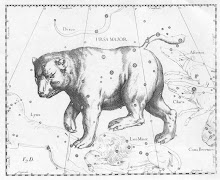“We don’t sell
yesterday’s corn! ... Our green wagons show up at familiar locations, picked
that morning…”
Last weekend was
beautiful in northern Indiana. In fact,
Friday and Saturday were the sorts of days that local festival organizers
dream, and hope, and pray for all year.
Sunny weather, light breezes, glorious blue skies and 75 degrees. (We might get lucky again this weekend!) Lovely days, of course, to consider STEM
engagement in small Indiana towns—not the Purdue Day experience at the Indiana
State Fair last Friday, but a much more local experience. For instance, elephant ears are a popular
dough pastry, but there seems to be something more… essential… for those who
lined up at Old Settler Days in Delphi, gathered around the courthouse
square. It’s not just the subject, but
the context and application, that matters for those few days.
Part of this
lesson came from an unexpected discussion I had with Vic Lechtenberg over
lunch. (Vic had to leave lunch early, as
it turns out, specifically to go down to Indianapolis for the Purdue Day BBQ at
the State Fair.) After many years at
Purdue as a professor studying crops, and as Dean of Agriculture, Vice Provost
for Engagement, Acting Provost… Vic
connects to people well about the applications of his work. We were talking about sweet corn (another
staple at these local festivals), and why Indiana folks rave about how their
corn is better and sweeter than anyone else’s.
Funny, I mentioned, folks in Wisconsin used to say the same thing at
their sweet corn festivals. Vic then
explained the science behind this feeling, and the appeal of the green
wagons. The enzymatic reaction in corn
that turns sugar to starch means that tasty, succulent eating corn doesn’t
travel well. Locally grown, freshly
picked, tastes the best.
It was in that
moment that I realized why I think the A in Agriculture is different from the
other letters in STEM. Agriculture is a
beautiful way of connecting science and technology, engineering and math, in
ways that people care locally. Normally,
I don’t think much about enzymes or sucrose decomposition reactions, the stuff
of organic chemistry. But how can I
think about sweet corn anymore, or the signs I see by the roadside, without
thinking about Vic and his focused explanation in ways that mattered?
And in that
thought was a seed (pardon the pun).
What’s the difference between trying to get someone to be excited about your
interest, and trying to get them excited about how your interest links to their
interest? An abstracted discussion about
advances in manufacturing seems remote and dry.
However, I got to spend a few minutes at the cruise-in a few blocks from
the Taste of Cass festival in Logansport.
 |
| The Taste of Cass Festival, Downtown Logansport |
One very proud
owner showed off their 1925 Indiana Motor Truck, made in Marion—even providing
a brief history of the company. Across
the way sat a 1955 Studebaker.
 |
| Restored 1925 Indiana Motor Truck, Logansport Cruise |
 |
| Indiana Truck Owner's partial history of the company |
 |
| 1955 Studebaker... Looks like it just came from the South Bend factory. |
Although they
weren’t at the cruise, Auburns, Stutzes, Subarus, Toyota have all been made in
Indiana, all representing milestones in manufacturing. What cars will be at the cruise-in during
Logansport’s 200th or 225th anniversary (and I wish them
the very best in achieving those milestones), and what stories will people
tell? Will anyone have the sense to
listen?
Round barns were
a technological and engineering marvel in the 19th Century. Space for storage, and showing, and efficient
use of materials. There are two notable
round barns in Rochester. One is the
Round Barn golf course, at what used to be a fish hatchery. (“We didn’t have to create the water hazards,
they were already here!”)
 |
| Round Barn Golf Club, Rochester, IN |
I didn’t know
this when I first stopped in to ask about greens fees, but the conversation
brought me back to a challenge at a STEM Action Coalition meeting to show
whether NASA had anything to do with fish hatcheries. I could immediately make the connection to
tilapia and enclosed life support systems; geographic information and water
quality; and ecological models of system dynamics, including mathematical
descriptions of stability and resilience.
I’d just finished writing a paper on resilience that the folks in the
golf course might not care about… but they would get a discussion about keeping
a lake stocked with healthy fish.
For many
aerospace geeks, there are a few names on the pantheon of people whose names
are not just aerospace history icons, but whose names represent iconic
companies. Curtiss. Douglas. Hughes. Wright.
School children know that Wilbur was born in Indiana. But do we even remember that another of that
pantheon was born in Indiana as well?
Lawrence Bell has a small museum in his hometown of Mentone, the Egg
Basket of the Midwest. Who is Bell? Ask anyone in helicopters about the Bell UH
series (“Hueys”). Or anyone from the
Right Stuff era. Chuck Yeager’s Glamorous Glennis, in bright orange,
breaking the speed of sound over the California desert… the Bell X-1.
 |
| Bell Aircraft Museum... It wasn't Sunday. |
Sadly, I’ve not
been in the museum. It’s only open for a
few hours per week, on Sunday afternoons.
It’s a small group of devoted volunteers, trying to keep an important
memory alive in a warehouse across from the silos and animal feed office, just
off Indiana 25. Mentone’s egg festival
is in late May, not August, but any weekend will do.
 |
| Mentone Indiana, Egg Basket of the Midwest. And home of Lawrence Bell. |
Maybe there will
be some other glorious Indiana day, when I will get to spend some time
connecting to their interest, and savoring another of the locally grown
products.





No comments:
Post a Comment